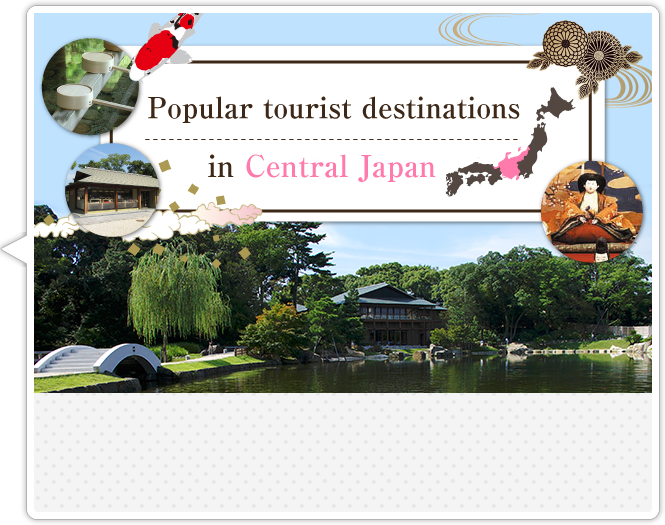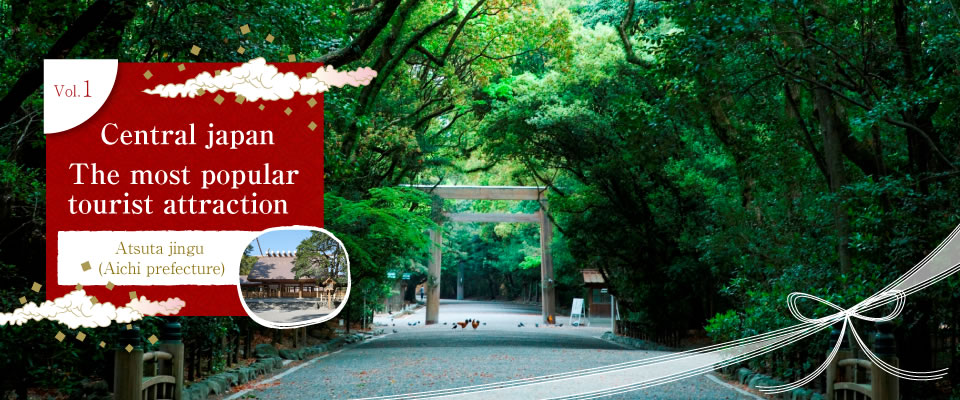
TOP > Atsuta Jingu

Just seeing uncountable historic temples kept in China, people can recognize that Chinese believes in Buddhism deeply. Japan has also been remarkably influenced by Buddhism, numerous temples can be seen in Japan. Moreover, another special style of holy architecture — Shrine is in Japan too.
Before the arrival of Buddhism in the 6th century CE, the Japanese worship stone, tree, wind, thunder etc. and regards nature as a gift of god (Kami) and natural phenomena as power of god, for worshipping gods, getting the blessings of nature from Gods, they built houses (shrines) for gods.
Famous Atsuta Jingu (shrine) is located in Nagoya, second only to Ise Jingu. One of the Three Sacred Treasures of the Imperial House (Kusanaginotsurugi) is worshipped here. In busy downtown, tranquil and solemn Atsuta Jingu exists, possessing 190,000㎡ woods which brim with harmonies and flourishing lease of life. Visitors’ soul is soothed, and bodies become vigorous and energetic while walking into the woods, breathing the fresh air.

When visiting the Jingu, a gateway at the entrance to a shrine (Torii) comes into view at first. Torii is a boundary which separates inside of shrine, the sacred place god lives in, and outside of shrine. Visitors should keep silence out of reverence for god after entering into inside of shrine.

The difference between shrine and temple is the Water Ablution Pavilion. It's set in front of the shrine for ritual cleansing of hands and mouth with purification water before approaching the main shrine.
The structure of Atsuta Jingu is same as Ise Jingu, called Shinmei-zukuri, an architecture style of the shrine. Such unique architecture style is completely different from that of temple, so fantastic that visitors will remain it in their hearts profoundly.
To Japanese, shrine is the divine place. A sea of people go visiting Atsuta Jingu to pray for a roaring business, the well-being of family and so on at the beginning of the year.

Moreover, the Japanese hold the wedding ceremony in Jingu. Leaded by Shinto priest and shrine maiden, bridegroom and bride wear Japanese traditional, exquisite dresses, standing before the presence of deity, reporting marriage to god, and praying for divine protection. Shrine maidens dance with Gagaku (ancient imperial court music) played by musicians to bless married couple.

Furthermore, when baby boy is 32 days after born, baby girl is 33 days after born, parents bring them to Atsuta Jingu to report god that babies were safely born and pray for the healthy growth of babies.
In addition, when boy is 3 years old and 5 years old, girl is 3 years old and 7 years old, parents bring them to Atsuta Jingu to hold a traditional rite of passage (Shichi-go-san) annually on November 15, thanking god for protecting children grow up healthily and gifting them well-being. Children look so wonderful with putting on gorgeous traditional clothes.

In 1966, Atsuta Jingu Museum opened, collecting 6,000 pieces of national treasures and important culture properties, such as sacred Treasures of Atsuta Jingu, swords, Japanese-style mirrors, bugaku-men (mask worn by a bugaku dancer), and high literary value ancient manuscripts. They are displayed in order each month.

(After visiting Atsuta Jingu, dining at the greatly famous restaurant of eel next to Jingu, Houraiken, to savor the wonderful flavors of eels makes for a perfect taste experience.)
